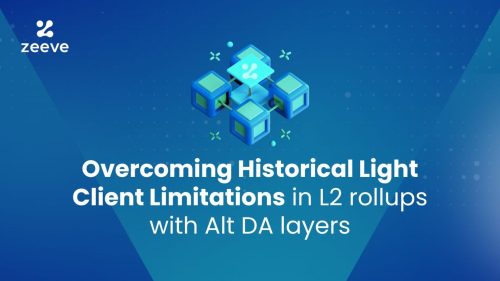
Overcoming Historical Light Client Limitations in L2 rollups with Alt DA layers
Rollups are suffering under one grave problem where they need to be highly interoperable with other ecosystems for not diluting the liquidity. However, in order to do that, they need cost-efficient data availability solutions for validation, which should be decentralized and secure. That’s where the light nodes/clients are making a difference. In this piece, we shall deep dive to understand how light nodes/clients are allowing the rollups to maintain the integrity of the network without compromising scalability and interoperability.
Why Do We Need Light Clients in Rollups?
Light client protocols streamline verifiability for the rollup ecosystem because they help the rollup scale with lesser expenditure to verify and validate a transaction for maintaining the integrity of the network in comparison to full nodes. Because they help in pruning unnecessary information to free up the block space which allows the clients to verify transactions as per their need without having to download the entire blocks of transactions .
However, while doing the same they face an imminent data unavailability problem because in order to do that the rollup light clients have to prune the old unwanted data to free-up block space which exposes the rollup space to vulnerabilities. In the absence of dependency on their own network to verify and validate the data in the most cost-efficient manner, light clients expose the rollup environment to the following challenges.
How Light Clients Struggle In the Rollup Ecosystem?
In order to understand how light clients have to struggle, you need to understand the state of the blockchain. In the blockchain, there are full nodes, validator nodes and light nodes/clients.
Now, light nodes are the ones which are just concerned about what the validator nodes and full nodes provide or they are just concerned about the end product.
For perspective, if validator nodes/full nodes wish to collude a transaction through double-spend and include the same in the blocks and provide the same information to the light nodes/clients for settlement, light nodes/clients have no other option but to accept whatever has been passed by the full nodes.
Now, this creates a one-way trust bridge for the light nodes/clients which is not reliable for the ecosystem. A recent Orbit Bridge compromise which siphoned off $80 M happened due to data unavailability because the hackers could sign a transaction through multi-sig and include the same into the bridge to be released on the target chain. Since light nodes had no way to validate the transaction, they simply accepted the block as valid and executed the transaction.
Hence, it wouldn’t be an understatement to say that light nodes are not suffering from the problem of double-spend but data unavailability to counter that double-spend attacks.
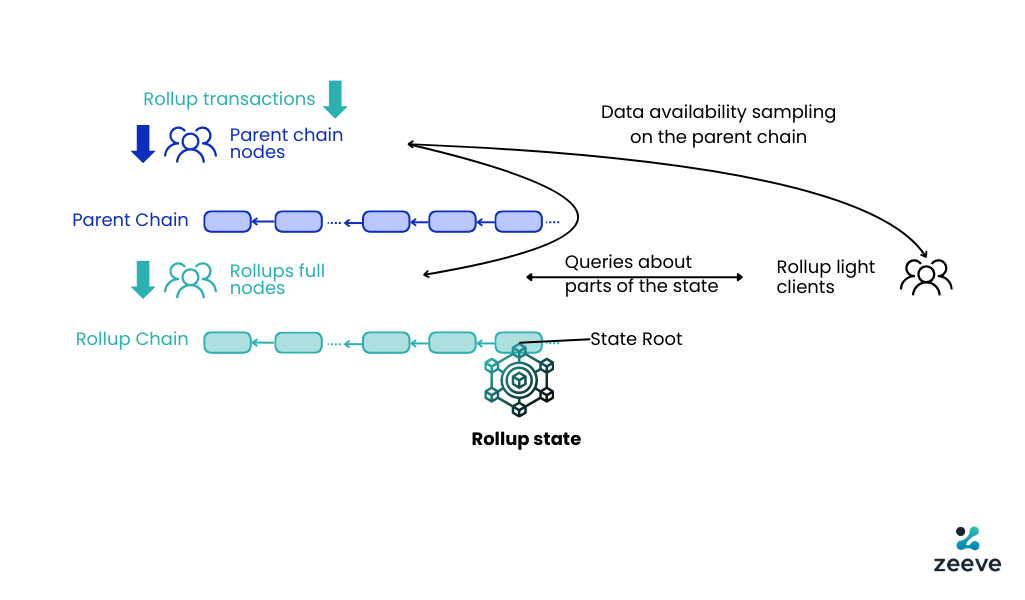
How is the DA Layer Solving the Same for the Light Nodes?
The DA layer is helping solve the same for the light clients through Data Availability Sampling or (DAS). Through the help of the DAS, the light clients for the first time are able to enjoy the same degree of security as the full nodes. They can request for small random pieces from each block and request for the complete transaction from the DA layer. The DA layer will host the light clients and the full nodes are relieved of their burden and they just play an active role to ensure high redundancy of their role while safeguarding the ecosystem.
The DA Layer’s validator node will pack the transaction as packages and construct a transaction block. They will do the same without executing the submitted data blobs. A KZG commitment will be created for that data. Through these KZG commitments, the light clients can quickly retrieve the missing data even if 2/3rd of all the validators choose not to completely reveal the complete block data. With just a small piece of information, the DA layer will be able to help the light clients extract data because it will be populating the DA network with DTH or Distributed Hash Table whose main role is to keep data available for the peer-to-peer network. So, if the light clients are provided with data and they want to recheck the data. Even in the event of full nodes and validator nodes going offline, the light clients can still validate the data and choose to either include in the block for settlement or reject the same.
Learn more on: Alt DA Layer Solutions changing the cost game for Layer2 rollups: Spotlight on key players
How It Will Help the Rollup Ecosystem Grow?
Meeting unmatched Scalability
The DA layer separates data availability and computation which significantly increases the throughput of the data. Hence, light clients can quickly perform computation at scale through DAS, Erasure Code and KZG commitments at half the cost which they will have to incur on a full node with very high computational hardware requirements. As a result, when light clients with very low hardware could participate in the ecosystem, not only it eliminates unnecessary pressure on the ecosystem that increases the block sizes and pushes the fees to go off the roof; but also helps in keeping the ecosystem safe and secure by allowing more light clients to participate and keep the rollup ecosystem increasingly decentralized for security.
Trust Minimized Operations
Mostly, the light clients have to suffer because they have no hardware required to verify the transaction. As a result, they have to trust whatever the full nodes have to relay back to them. Through DAS, Erasure coding and KZG commitments, verification is not outsourced to the smart-contracts, on the contrary, they can be done at the client’s side at a much cheaper cost. Hence, light clients can perform the computation in a truly trust minimized way using ZK-Proofs to verify the state of the rollups.
Better interoperability
Rollups need to be interoperable with the partner network for maximizing liquidity. Light clients using the DA layer have provided them to build their own rollup chains in an agnostic environment and use state validating bridges that can help them interact with different rollup environments without having to trust the majority of the nodes validating the transaction. Hence it helps the rollup ecosystem to adapt as per their changing needs; thereby, not just scaling the ecosystem but also making them interoperable.
Improved Developer Experience
DA Layer for light clients allow the developers to enjoy trustless, decentralized and efficient ways to interact in a rollup environment. They help create APIs which can easily provide them access to different networks of rollup chains allowing all the chains to download all the latest updates on the network. Hence through this experience, any device of the light clients can easily validate the blocks as and when required as per their will.
Deploy Your Own Rollup With 3rd party integrations on Zeeve
Developers building their Optimistic or ZK rollups with Zeeve can take the benefits of automated deployments and efficient management of their custom layer2 chains. Developers can test with complete flexibility using our 1-click Sandbox tool to test their deployment configurations before moving to testnet/mainnet.
Additionally, our suite of integration partners enhances your rollup capabilities by providing extra capabilities, such as Alternative Data Availability, Sequencers, decentralized oracles, account abstraction Software Development Kits (SDKs), and various other tools, all of which can be easily incorporated through the Zeeve RaaS platform.
Furthermore, our comprehensive service package includes full provisioning (including block explorers, faucets, data indexers, bridges, etc.), backed by an enterprise Service Level Agreement (SLA) and a commitment to 99.9% uptime.
If you are planning to launch your own rollups with your own light nodes, don’t hesitate to reach out to us. Our experts can help you identify the best infrastructure suitable for your use case. Schedule a call today!



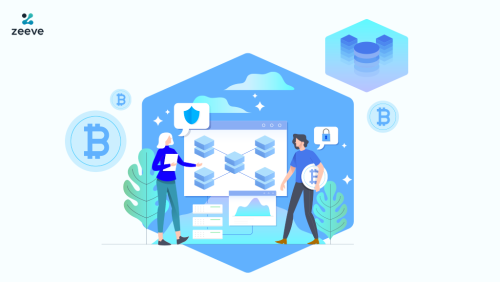
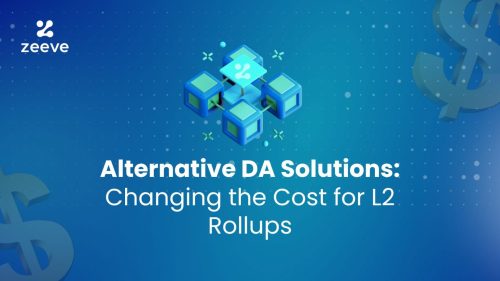
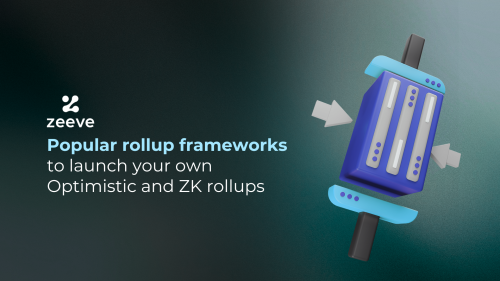

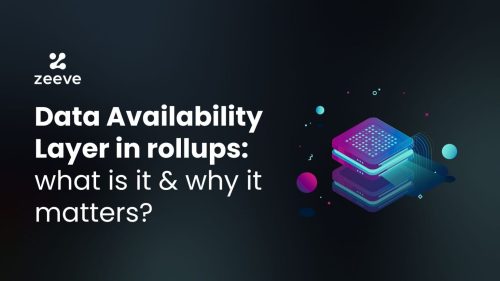
Responses